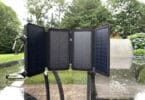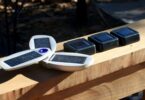When you find yourself out on the trail, whether you are camping, backpacking, or just going out for the evening, you will get to see some beautiful natural sights. That isn’t just limited to the daytime, you can see beautiful constellations and blankets of stars by simply looking up. If you are anything like us, you will want to capture each beautiful moment to bring home, stars included!
Taking pictures at night can be a difficulty, but if you bring along with you the best camera for astrophotography, you will be good to go! Astro-what? Astrophotography is the blanket term that refers to taking pictures of anything that is not on earth, but rather in space. If your mind is jumping to expensive and large telescopes, think again! You can take beautiful photos with equipment ranging in price and specialty.
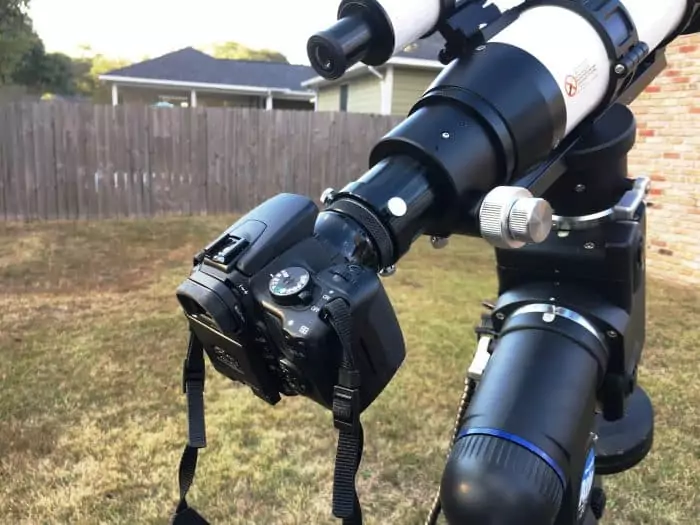
In this article, we are going to cover what makes the best astrophotography camera, and even give you a few tips on how to use one. Along with the cameras, we are listing below, we highly suggest that you bring along a sturdy tripod as well. Long exposure is one of the best ways to capture these dazzling sights, so you want to minimize the amount of physical movement.
See also: Best Camping Chairs: Take A Seat And Relax
While this is normally not a problem when backpacking when you are searching for a spot to take photos, look for the darkest place you can find. It will keep your shot from being polluted with light created from things other than stars, making the centerpiece of your image less visible.
Our Top Picks
| Name | Weight | CCD or CMOS | Price |
|---|---|---|---|
| Orion 5302 StarShoot | 1.85 Pounds | CCD | Shop Here |
| AstroStreet ToupCam | 1 Pound | CMOS | Shop Here |
| Celestron 955509 Skyris | 1 Pound | CMOS | Shop Here |
| Vixen Optics CCD | 1.43 Pounds | CCD | Shop Here |
| iOptron 5200 Planetarium Imager | 1.1 Pounds | CMOS | Shop Here |
| Celestron NexImage 5 | 0.5 Pounds | CMOS | Shop Here |
| Orion 52031 StarShoot | 0.13 Pounds | CMOS | Shop Here |
Things to consider before buying
Buying an astrophotography camera can be just as difficult as buying a regular camera for casual photography. There are quite a few parameters and decisions to make. We are going to outline some of the basics of selecting this type of camera, but ultimately the decision comes down to the types of photographs you wish to take. As we mentioned before astrophotography is a term, it can be applied to pictures of planets, galaxies, stars, and more. Check out these tips to consider before buying/
What Object you are Photographing
Unfortunately, one camera does not photograph all, and you should have a general idea of what types of images you are after. If you have just started out, we suggest starting with lunar and solar images, as they are easier to photograph, and can allow for more maniupulation in the editing stage. Regardless, we are providing you a quick table down below for you to first determine what specifications you should be looking for
| Type of Photo | Specs to Look for |
|---|---|
| Scenic astrophotography (i.e. moon shots, aurora) | For this type of photography, look for cameras that have short exposure times. |
| Planetary | For objects so far away, you will want a high resolution to pick out details. Look for atmospheric steadiness as well. |
| Deep Sky (nebulae, galaxies, star clusters) | The two words most important for this deep view into the universe are long-exposure and low-noise! |
Sensors
As you saw above, there are two main types of sensors that you can choose from when looking at cameras: Charged-Couple Device (CCD) and Complementary metal-oxide semiconductor (CMOS). While both of them start in the same way, they are image sensors converting light into electrons, they do it in very different ways.
A CCD sensor is going to be more expensive, and find a home in cameras that specialize on lots of pixels and light sensitivity to give you crisp images. They are high quality and low noise, but they consume a lot of power in order to work effectively. The CCD sensors have also been around longer on the market, so they tend to have more reliable reviews and ratings.
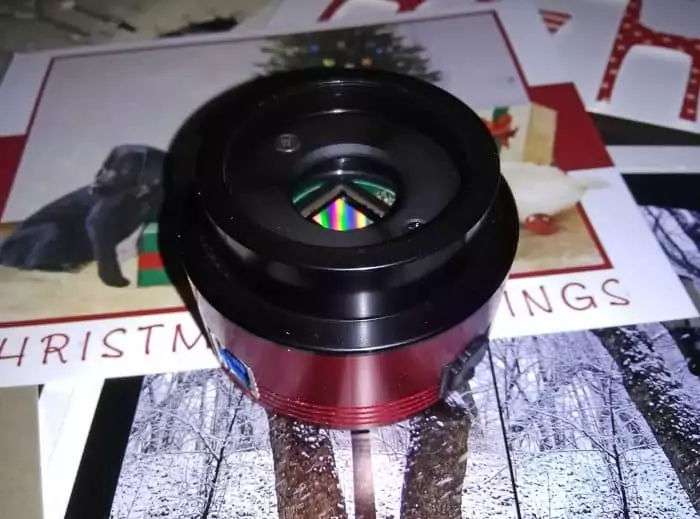
The CMOS on the other hand, is the less expensive product, for a few interesting reasons. The CMOS uses little power and tends to have less light sensitivity. It also is more susceptible to noise. So while the CMOS may not be best for deep space photographer, they make great sensors for first-time astrophotography images.
Size
When it comes to cameras, big isn’t necessarily better, as you are using a scope to enhance your images. A camera that ends up being both big and heavy, or even too small, is going to lead to a difficult trip. As a rule of thumb, the bigger the CCD, the larger and more expensive the camera. Look at your budget and determine if the CCD size is your only requirement, otherwise look at things like sensitivity, filter wheels, and software instead of just size.
Guiding
There are two types of guiding systems for astrophotography cameras, auto guiding and manual or self-guiding. If you are buying a camera that has lots of advanced small pixels for high resolution, then having a good guiding device becomes crucial. Long exposures will only create good images with guiding. Long exposures require an auto guide, the most common type being a radial off-axis guider.
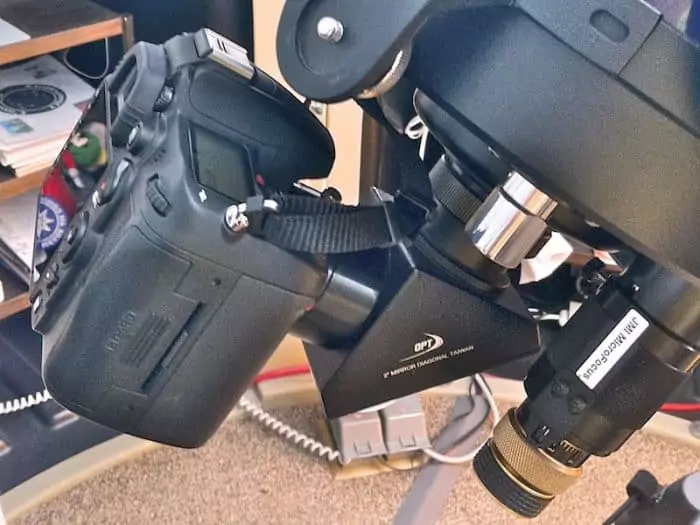
There are also self-guiding cameras, but they require quite a bit of knowledge, and some software know-how. Self-guiding, allows you to select a guiding start with your computer and then you control the tracking.
Exposure Length
When you are considering deep space photography, you need a high performing camera that can auto guide but also has the ability to do long exposures. Deep space photography needs a consistent stable image in order to get the most out of your images. For best quality look to cameras that can have ten-minute exposures, or even longer.
Noise Reduction
Some cameras have built-in features to help reduce the noise in your photos and are built with the idea of shooting in the dark in mind. What is noise though? Noise essentially, is any distortions or even discolorations in your final product, this is brought about by shooting low light.
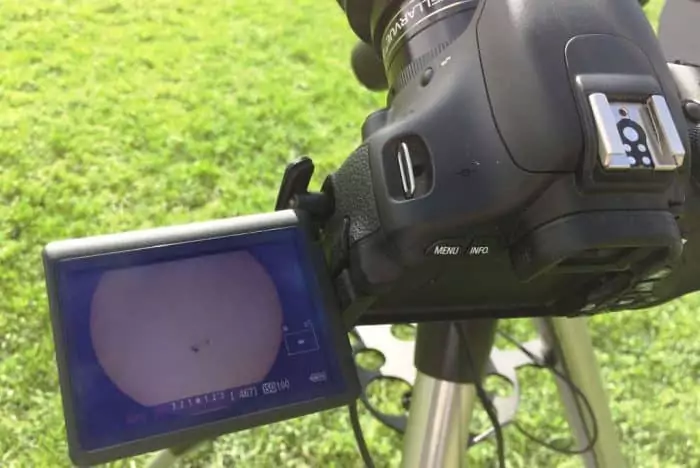
This is why it is extra important to get cameras with built in noise reduction functions for astrophotography.
Software Needed to Operate
Your last consideration is going to perhaps be the easiest to decode and understand, and that is the software. You can buy the most expensive and beautiful camera system on the market, but if it won’t link up to your computer, your images are trapped. When you look at the specs, make sure your operating system supports the camera’s software.
Best products on today’s market
Now that you know how to buy, here are some of the best astrophotography cameras:
Orion 5302 StarShoot
DIMENSIONS: 8.3 x 8.3 x 5.1 inches
SPECIFICATIONS: ½ inch CCD optical sensor technology; color CCD chip, 752 x 582-pixel array; regulated thermoelectric cooling for reduced noise; ST-4 output, built in, with auto guide
BEST USE: Deep Sky Photography
This dedicated deep sky astro camera is well loved by beginners to the field who are looking for high-resolution images. Beginners and experts alike love the auto guiding system, simply lock onto a fainting guiding star, set the exposure, and enjoy! From a technical standpoint, the Orion 53082 StarShoot has high-tech features, an onboard fan, auto guide, and the ability to program color images from your computer.
The main reason that this camera doesn’t have a shining five-star review is because of its difficult software. It seems to be temperamental, at best, with Windows programs of all types, and the updates seem to make the process more difficult.
There is a lot of customer feedback around not being able to properly use the camera due to its software. The company does have excellent customer service, and their IT guys are constantly sending solutions to customers who may not otherwise be able to get the program running.
PROS:
- Auto Guider
- Strong optical sensor
- Excellent choice for beginners
- Good customer service
- Software temperamental
- Updates tend to crash software
RELATED: This camera can only be advanced by the Orion 0.5x Focal Reducer, which allows for you to maximize your imaging area by up to a factor of 4, for even more deep sky objects!
AstroStreet ToupCam
DIMENSIONS: 6.3 x 5.9 x 2.4 inches
SPECIFICATIONS: CMOS sensor; double-sided AR coating; built-in ST4 auto guider; Aluminum CNC housing for telescope fitting; international adaptors available
BEST USE: Planetary and Deep Space
This relatively inexpensive option is a good choice for the photographer who is not quite sure if he is ready to jump into deep space photography. It will take decent photos of planetary objects, and events, like auroras, without putting a dent in your wallet. The AstroStreet ToupCam allows you to record videos, which gives you an exciting new option, rather than just photography.
You can process and preview them in the same way. It is a CMOS sensor, meaning that you are getting a camera with less resolution, but if battery life is important to you, then this is important.
Unfortunately, this camera also has software difficulties, and the tracking doesn’t seem to work while you are capturing images and video. This can lead to blurry or imprecise images, so you are getting less quality. This is a one size fits all camera, meaning you won’t be getting a lot of special features, but you will be able to take decent photos of different types astronomic views.
PROS:
- Light
- Inexpensive
- Longer life battery
- Auto Guider
- Difficult to use software
- Video recording quality not so good
Celestron 95509 Skyris
DIMENSIONS: 3.62 x 3.62 x 7.13
SPECIFICATIONS: 1/3 inch CMOS imagining sensor made by Aptina; high-speed data transfer; captures 200 frames per second; 1.2 megapixels; monochrome camera; attached Skyris Filter Wheel.
BEST USE: Planetary imager
This rare 5 star reviewed camera, that is suitable for a pro photographer and the newbies to astrophotography. This type of camera is meant to capture planetary images; with its lightning fast sixty frames per second you will be capturing excellent views of the Sun, Moon, and beyond. What is even more impressive about Celestron 95509 Skyris, is everyone’s love for its software that is both Windows and Mac OS.
It seems to have no glitches or hiccups and is compatible with any scope as well. The reviews rave of easy use and well-detailed images that are up close views of the planetary system. End of the day, this camera simply takes great photographers with its monochrome software and lenses.
The only negative thing about this little camera is that it is quite expensive, and while it is beginner friendly, for really detailed photographs you need to spend some time with the software.
PROS:
- State of the art imaging sensor
- Fast data transfer
- Minimized thermal noise
- Easy to use software
- Expensive
- Does not have auto glider
Vixen Optics CCD
DIMENSIONS: 4 x 4 x 4 inches
SPECIFICATIONS: 1/3” CCD color imaging sensor with a video terminal and excellent resolution, 540 TVL. It has an eclectic shutter that operates at 1/6- but can go up to a 1/120,000 second shutter image.
BEST USE: Auto guide imaging
The Vixen Optics CCD Video Camera is at it’s best when allowing it to auto track and adjusts on it own for beautiful color. With a strong zoom feature and the black light compensation feature, your images stand out, even with extreme lighting. What camera lovers really go nuts over is its high function Auto White Balance. As it tracks the camera ensures that the right colors are coming through, even when there is an absence of white color in your shot.
The little camera does all this while working with its software so that you can see the mirror flipped camera image easily. What’s more important is that as you are viewing your image, if you don’t like the position you can manually calibrate the cameras mount and keep the camera auto-tracking as well.
The downside to Vixen Optics camera is that it does have a lot of auto features, so if you are looking to constantly adjust and recalibrate for your own take on astrophotography you will struggle a bit with the software. Your images will be clear if you allow it to go on auto mode, but on average this camera will cost you a pretty penny.
PROS:
- Auto guiding and tracking
- Excellent zoom features
- Fast shutter speed
- Expensive
- Not designed for beginners
iOptron 5200 Planetarium Imager
DIMENSIONS: 3.9 x 5.8 x 6 inches
SPECIFICATIONS: CMOS sensor with enhanced digital clarity; max resolution is 2592 x 1944; captures both video and photographs; supported on Mac OS X, Windows XP, and Linux.
BEST USE: Planetary photography
This technical based camera creates images that are not only clear but highly detailed, it is a rare highly rated camera, that won’t take too much out of your wallet. What we love about the iOptron 5200 Planetarium Imager is that it is a long exposure camera that takes not only excellent photographs but video as well. Images straight from your telescope appear on your computer instantaneously, even video images of planets!
The crisp images are shown in excellent resolution and are capable of fitting most standard telescopes. This is a CMOS camera, meaning that the clarity comes with reduced noise in the photo. It is both reliable and durable, producing excellent photos that have HD resolution. As an advanced photographer, you will enjoy digging into the software to create high-quality images.
Here is the thing about this camera, technicians love it, software developers love it, if you do not find yourself in that camp, you may not love it. It is a very features based software, meaning there is a lot to manipulate and code, which will ultimately lead to very detailed photos. But if you don’t see yourself firing up Linux, then you may want to go to a more automatic featured camera.
PROS:
- High resolution quality
- Fits standard telescopes
- Supported by most platforms
- Reliable and durable
- Requires prior software knowledge
- Not for beginners
Celestron NexImage 5
DIMENSIONS: 4 x 1 x 4 inches
SPECIFICATIONS: High-resolution 5MP; Aptina CMOS imaging sensor; progressive scan; live video capture and mirror on the computer; manual camera manipulation from the laptop.
BEST USE: Planetary and moon images
This little light weight camera packs a heavy punch when it comes to clarity and detail of not only planetary images but solar images as well. The Celestron NexImage 5 is not meant for beginners, and most who just start out are confused and frustrated with the software. It takes a thorough interest in the manual and some background in coding to achieve beautiful images. People who are advanced in these matters create beautiful photos, even with smaller scopes.
That being said, the price is just right, meaning that you can advance to the next level of astrophotography with this little camera. It allows for manual adjustment, so you can really learn how to get a good image and improve your skills. It is perfect for planetary images but really shines with specific moon images.
Two things to expect, the software has a small glitch in it. As you focus on your images your live footage may cut out, this will force you to stop and restart the software in order to continue. After a long day that can be a nuisance. The other issue is that sometimes little red lines appear in your image, a skilled photographer and editor can remove the red lines from the photograph. Other than these two issues, the camera functions perfectly.
PROS:
- 5 Mega Pixel color sensor
- Camera control based software
- Progressive scan
- Small pixel size
- Software glitches
- Red lines in image
Orion 52031 StarShoot
DIMENSIONS: 2.5 x 1.25 x 2.5 inches
SPECIFICATIONS: 74% quantum efficiency; auto guiding,;1/3 inch CMOS sensor resolution of 1289 x 960; software with focus aids, histograms, and exposure settings.
BEST USE: Deep Space photography
The Orion 52031 StarShoot, may be small, but it received an amazing five stars, due to its high-resolution magnification and fast frame rates. Its auto guider is rated incredibly high, and performs well with most off-axis guiders as well. It takes incredibly sharp monochrome images and can be used for deep space because it has an auto guided ten-minute exposure rating. The software has many settings to work with and it comes with its own ASCOM driver.
The reviews show that this camera is well loved, it has excellent and easy to manipulate software, connects easily with most mounts, and has no glitches. It is also incredibly durable, the camera can withstand drops and chips and still produce sharp images.
PROS:
- Incredibly durable
- Fast shutter rate
- Easy to use software
- Lightweight and easy to pack
- Expensive
Wrap Up
Picking your camera can sometimes be difficult, there are a lot of specs to look into and at the end of the day, it depends on what you are looking to shoot and how experienced you are. That being said, these astrophotography specific cameras create beautiful images, far more precise than your DSLR camera can pick up. Once mounted on the telescope, you can capture images with clarity and detail.
Found the camera perfect for you, tell us which one and why you picked it? Or perhaps you have had an excellent experience already. Which one would you recommend to your friends? Let us know in the comments right below.
Be sure you’re adequately protected from the cold during your night session. Check out our top choice for the best insulated jackets for more information.









